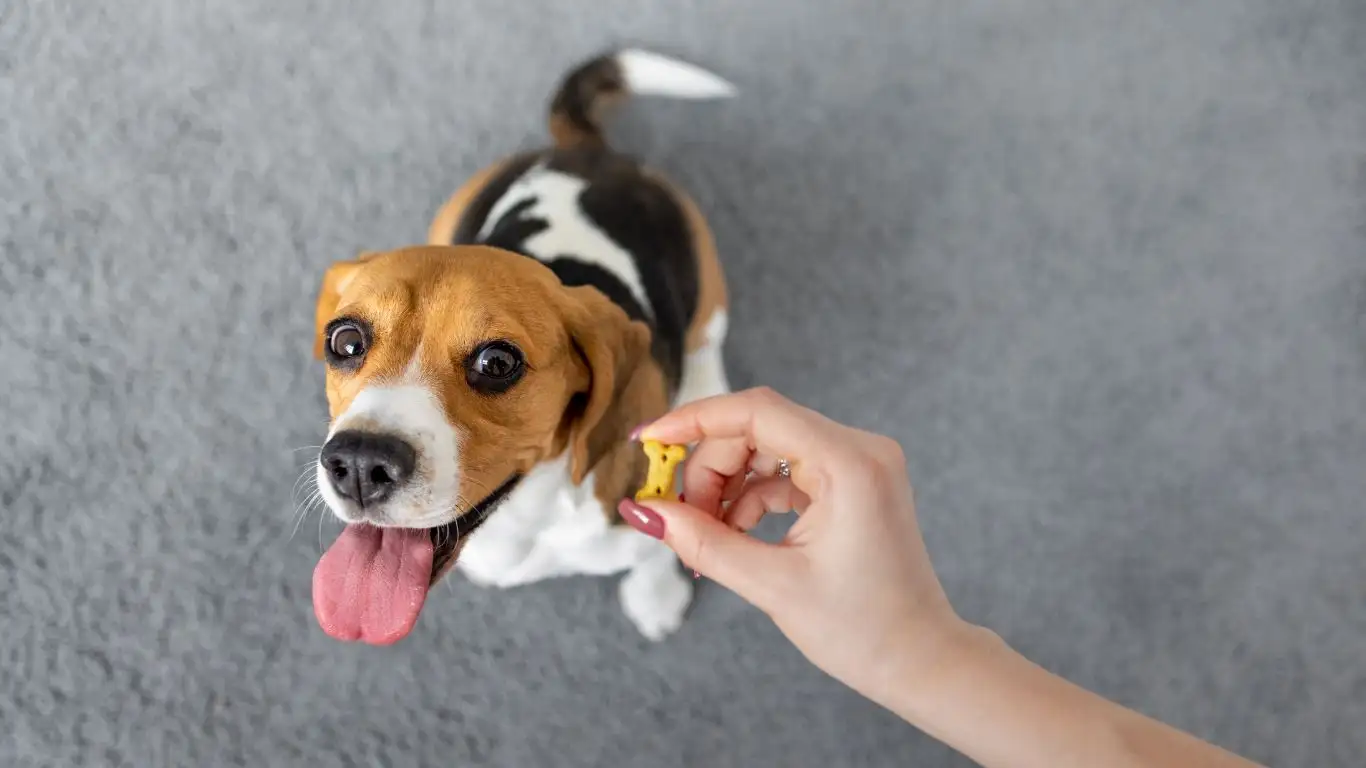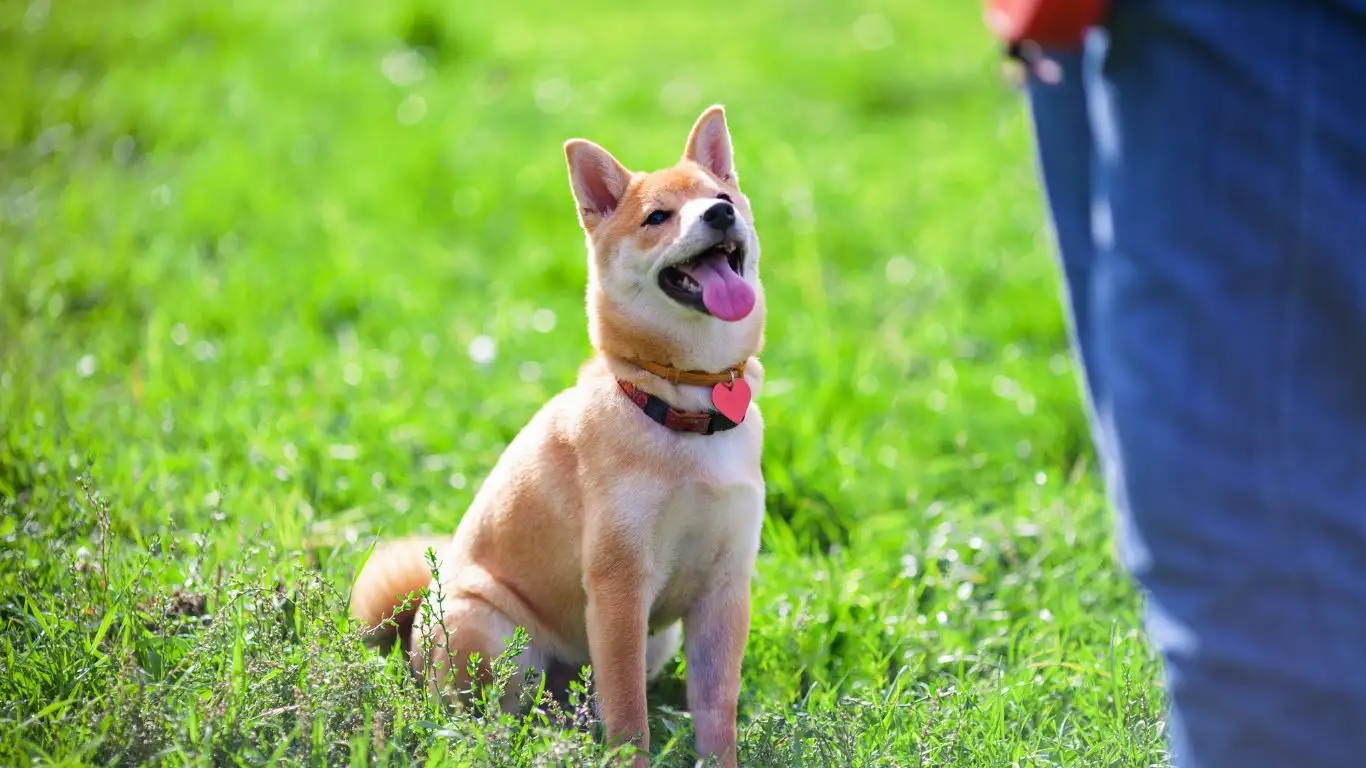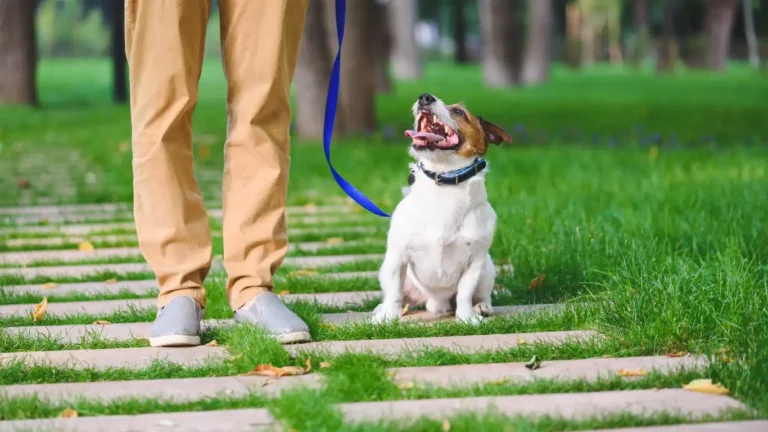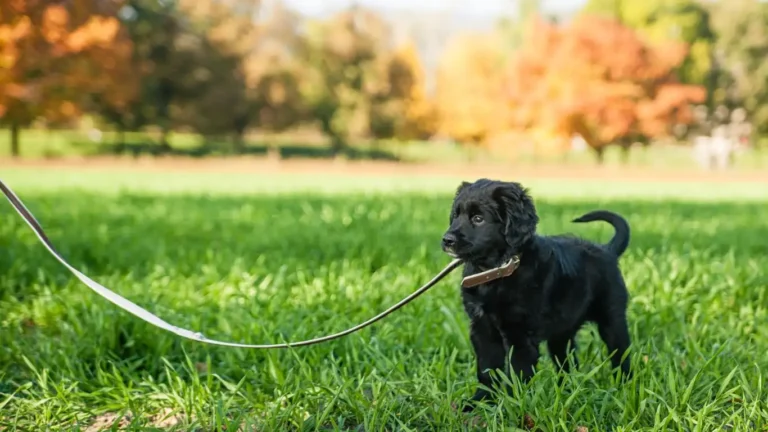How to Train a Dog to Walk Calmly Through Crowds: Proven Techniques for Success
If you’re wondering how to train a dog to walk calmly through crowds, you’re not alone. It’s one of the most common challenges I encounter as a Canine-Assisted Therapy Trainer. As someone who spends a lot of time training dogs for various environments, I can tell you from experience that it’s totally possible to teach your dog to be calm, focused, and well-behaved in busy, noisy settings. The process may take patience, consistency, and the right techniques, but the rewards are worth it for both you and your dog.
The Importance of Teaching Your Dog to Walk Calmly in Crowds
Why is it so important for your dog to be able to walk calmly through crowds? For many dog owners, it’s not just about having a well-mannered pet. It’s about making sure that your dog is comfortable in busy, public places like parks, city streets, or even pet-friendly events. Whether you’re heading to the farmer’s market, walking around downtown, or participating in a pet parade, teaching your dog to behave around other people and dogs is essential for their socialization and your peace of mind.

Dogs who are uncomfortable in crowded situations may exhibit anxiety or reactive behaviors, such as barking, pulling on the leash, or trying to run away. This can lead to stress for both the dog and the handler, making outings more difficult than enjoyable. By training your dog to remain calm in crowded environments, you’re helping them become more adaptable and confident, which ultimately leads to a better quality of life for both of you.
Understanding Your Dog’s Body Language
Before diving into the actual training steps, it’s important to understand how your dog communicates, especially in high-stress situations like crowds. Dogs are naturally sensitive to their environment, and they often react to unfamiliar stimuli, such as loud noises, a group of people, or other animals, by becoming anxious or excited.
- Relaxed body posture: This indicates that your dog feels comfortable and confident in the environment.
- Whining or whimpering: If your dog is showing signs of stress, it may whine or whimper when feeling uneasy.
- Tail between the legs: A nervous dog may tuck its tail, signaling fear or anxiety.
- Rapid panting: This can be a sign of stress or excitement in response to crowds.
Recognizing these signs will help you gauge your dog’s comfort level in a crowded setting. If they start to show signs of distress, it’s time to slow down, give them a break, and work on calming techniques before proceeding with further training.
Step 1: Start with the Basics – Leash Training
Before you even think about tackling the chaos of crowds, you need to ensure that your dog is comfortable walking on a leash. Leash training is the foundation for all other types of walking behaviors, including navigating through crowds. If your dog isn’t accustomed to walking beside you or tends to pull on the leash, this will only make navigating through crowds much harder.
Here’s how you can get started with basic leash training:
- Choose the right equipment: Start with a comfortable, well-fitted harness and a sturdy leash. Avoid retractable leashes, as they can give your dog too much freedom and make it harder to maintain control in busy environments.
- Practice walking in low-distraction areas: Begin training in a quiet area like your yard or a park with few people. Keep the sessions short and positive.
- Reward calm behavior: Every time your dog walks calmly by your side, reward them with a treat or praise. This will reinforce the desired behavior.

Leash training is critical because it teaches your dog the fundamental behavior of staying at your side. Once your dog is walking well on the leash, you can start introducing more distractions, like people or other dogs, but only in controlled environments. The goal is to make sure your dog associates walking calmly with positive reinforcement before you attempt more challenging situations.
Common Leash Walking Mistakes to Avoid
While leash training is straightforward, there are some common mistakes that many dog owners make when training their dogs to walk calmly.
- Letting your dog pull: This is probably the most common mistake. If you let your dog pull, they’ll quickly learn that pulling is the way to move forward, making it much harder to train them to walk calmly in more complex situations.
- Using punishment: Yanking or pulling the leash too hard can be harmful and may lead to more anxiety or aggression in your dog.
- Not being consistent: Inconsistent training will confuse your dog and prevent them from learning the correct behavior. Set clear rules and stick to them.
Be patient with your dog during this stage, and avoid rushing. As a Canine-Assisted Therapy Trainer, I’ve seen how rushing this step can hinder progress in the long run. Take your time to build a strong foundation, and the rest will follow.
Step 2: Gradually Introduce Distractions
Once your dog is walking calmly on a leash in a low-distraction area, it’s time to gradually introduce more distractions. Start by practicing in slightly busier places, like a local park or sidewalk with a few people walking around. Keep the distance between you and the distractions large enough that your dog can remain calm. If they start to react, simply move further away and gradually decrease the distance over time as they get more comfortable.

The key is to make sure that your dog is able to handle one level of distraction before moving on to the next. Trying to jump straight into a busy city street might be overwhelming for your dog, so be sure to gradually increase the level of difficulty.
Step 3: Desensitizing Your Dog to Crowds
Now that your dog is walking well on a leash and handling a few distractions, it’s time to start desensitizing them to the very thing you’re training them for—crowds! Desensitization is a gradual process where you expose your dog to the stimulus (in this case, crowds) in a controlled, positive way until they no longer react negatively to it.
The key to successful desensitization is to take things slow. If you rush into it too fast, you might overwhelm your dog, which could set back your progress. Start by observing crowds from a distance. Think of it like baby steps: you want your dog to see the crowd but remain far enough away that they don’t feel stressed. Over time, you can slowly decrease the distance while rewarding calm behavior.

Here’s how you can begin:
- Start small: Choose a location with a small crowd—maybe a quiet park or a less-busy section of the street. Give your dog plenty of space and observe how they react. Keep the distance large enough so that your dog can stay relaxed but close enough that they can see the people or activity.
- Reward calm behavior: Every time your dog remains calm while observing the crowd, offer them treats or praise. Positive reinforcement is the best way to encourage calmness.
- Gradually decrease distance: Over time, you can slowly close the gap between your dog and the crowd. Don’t rush this step; go at a pace that suits your dog’s comfort level.
Desensitizing your dog to crowds requires patience. Don’t expect them to be perfect right away. Like I always say in my therapy training sessions, the goal is progress, not perfection. Take your time and celebrate small victories along the way!
Step 4: Focus on Impulse Control
Impulse control is a huge part of dog training, especially when you’re dealing with distractions like crowds. Dogs are naturally curious and sometimes easily excited, especially in a bustling environment where there are so many new sights, sounds, and smells. Without proper impulse control, your dog might pull on the leash, bark, or even dart off to explore things they shouldn’t. This can create chaos in crowds and can even be dangerous for both you and your dog.
To teach impulse control, you need to practice some basic commands that will keep your dog focused on you, no matter what’s going on around them. These commands are especially important when navigating through crowds. Here’s how to start:
Start with ‘Sit’ and ‘Stay’
The basic commands of ‘sit’ and ‘stay’ are the foundation for impulse control. When your dog can sit and stay even in distracting environments, it gives you more control over their behavior in busy crowds.
- Sit: Teach your dog to sit on command. When you’re walking through a crowd and need to stop, a solid ‘sit’ will keep your dog in place and calm.
- Stay: Once your dog is comfortable with ‘sit,’ practice the ‘stay’ command. The key here is to build up the duration of the stay. Start by asking your dog to stay for a few seconds, then gradually increase the time as they get better at it.

These commands are vital for maintaining control over your dog, especially when you need them to stop and wait for you in the middle of a busy area. I always remind my clients that consistency is crucial here—your dog needs to know that sitting and staying aren’t just tricks but commands that they must obey no matter the surroundings.
Use ‘Look’ or ‘Focus’ Commands
Another great tool for impulse control is the ‘look’ or ‘focus’ command. This teaches your dog to focus on you, even when there are distractions. It’s incredibly helpful when you want to regain your dog’s attention in a chaotic environment, like a crowded street or event.
To teach ‘look’ or ‘focus,’ follow these steps:
- Start in a quiet area: Get your dog’s attention by holding a treat in your hand. When your dog looks at the treat, say the word “look” or “focus.” Once they make eye contact with you, reward them immediately.
- Practice with distractions: Slowly introduce distractions during your training sessions. Start with mild distractions (like someone walking by) and gradually work up to more intense ones, like loud noises or people moving quickly.
- Gradually increase difficulty: Over time, practice in different settings—parks, sidewalks, or even in crowds. The goal is to get your dog to look at you and ignore the distractions around them, which is invaluable when walking through busy areas.
By practicing this regularly, your dog will learn to tune out distractions and focus solely on you, which is essential when you’re navigating through a crowd of people or other dogs.
Step 5: Socialize Your Dog with Different Types of Crowds
As a Canine-Assisted Therapy Trainer, one thing I can’t stress enough is the importance of socializing your dog with various types of crowds. Different environments have different challenges, and it’s crucial that your dog learns how to behave in multiple settings to ensure they stay calm no matter what they encounter.

When you begin this step, aim to expose your dog to a variety of crowds in different environments. This could include:
- Outdoor events: Pet-friendly events, markets, or festivals.
- Busy city streets: These tend to have lots of people, traffic, and sounds.
- Indoor environments: Shopping malls, coffee shops, or indoor dog-friendly spaces.
Take the time to train your dog in each of these settings, making sure they remain calm and focused. Gradually introduce them to more complex situations, ensuring that they’re always able to handle the pressure of crowds without becoming overwhelmed.
Step 6: Reinforce Calm Behavior with Real-World Practice
By now, your dog has been exposed to the basics of walking calmly through crowds, but real-world practice is essential to solidify the training. This means you’ll need to get out there and practice in the actual environments where you expect your dog to perform well. Think of this as the final test for everything you’ve worked on. It’s like any skill—repetition and practice are key!
Start by taking your dog on short outings to places with light to moderate foot traffic, like a quiet shopping center, a park with a few people, or a less-busy street. Keep these initial outings short and positive, and always make sure to reward calm behavior.

Here are a few real-world scenarios to practice:
- Walking through a store: Many pet-friendly stores allow dogs inside. Start by walking through one with light foot traffic and practice keeping your dog calm around other people, carts, and products.
- Public transportation: If you live in a city where public transportation is common, this is a great opportunity for training. Begin with quiet times and gradually work up to rush hour.
- Local festivals or farmers’ markets: These are great environments for practicing with larger crowds. Be sure to observe how your dog reacts to the energy and sights of the area, and reward calm behavior as they progress.
When you practice in real-world settings, you’re also helping your dog generalize their calm behavior to all types of crowds, which is critical. It’s one thing for them to be calm in a controlled environment, but it’s another for them to exhibit the same composure when faced with the chaos of a large event. This is where the consistency you’ve been building really pays off!
Step 7: Be Prepared for Setbacks
Just like any other skill, training a dog to walk calmly through crowds isn’t a straight line. There will be setbacks, and that’s perfectly normal! Sometimes, no matter how much you’ve practiced, your dog might become overwhelmed by a new situation, and that’s okay.
When this happens, it’s important not to react negatively or get frustrated with your dog. After all, they’re still learning, and this is a part of the process. Instead, take a step back and assess what went wrong. Was there something in the environment that was too overwhelming? Maybe a loud noise or a group of people that made your dog nervous?

If a setback occurs, here’s what you can do:
- Return to lower-stress environments: Go back to quieter places where your dog is more comfortable and continue reinforcing calm behavior. Don’t rush into more crowded situations until your dog feels ready.
- Keep training sessions short: Training in overstimulating environments for too long can backfire. Always keep sessions short and positive, with plenty of breaks and rewards.
- Ask for professional help if needed: If you find that your dog is still struggling, don’t hesitate to reach out to a professional dog trainer who specializes in behavior modification. Sometimes a fresh perspective can make all the difference.
Remember, setbacks are a part of the learning process. I often remind the dog owners I work with that this isn’t a race. It’s more about progress than perfection. Celebrate every small victory along the way and understand that setbacks are just stepping stones toward success.
Step 8: Ongoing Maintenance and Continued Socialization
Once your dog is walking calmly through crowds with ease, you might think your job is done, but the truth is, it’s an ongoing process. Just like with any other skill, maintaining your dog’s calm behavior requires regular practice and exposure to new situations. Continuous socialization is essential to ensuring that your dog remains well-adjusted and comfortable in crowds.
In my experience as a Canine-Assisted Therapy Trainer, I’ve seen dogs that were once perfect at walking through crowds start to show signs of reactivity after months of not practicing. So, make sure to continue exposing your dog to different environments and situations, even after they’ve mastered the basics.
- Continue short outings: Take your dog on weekly trips to different locations where they can practice their calm walking. This could be anything from a local park to a busy event.
- Use maintenance exercises: Incorporate obedience commands, like “sit,” “stay,” and “focus,” regularly in your walks and outings. This will keep their skills sharp and reinforce positive behaviors.
- Increase the difficulty level: As your dog becomes more confident, start increasing the challenge. For example, visit new locations with more people, other dogs, or unpredictable situations.
Regular exposure and continued training will help your dog maintain the calm, focused behavior you’ve worked so hard to establish. It’s also a great way to prevent any unwanted habits from creeping back in.
References:
For more information on canine behavior and training techniques, check out these trusted resources:
- American Kennel Club (AKC) – A wealth of information on dog breeds, training, and behavior.
- The Happy Puppy Site – Offers helpful advice on training and puppy care.
Disclaimer:
While the information provided in this article is based on my experience as a Canine-Assisted Therapy Trainer, every dog is unique. The methods discussed may work for some dogs but not for others. Always consider consulting with a professional trainer for tailored advice, especially if you encounter persistent behavioral issues.






